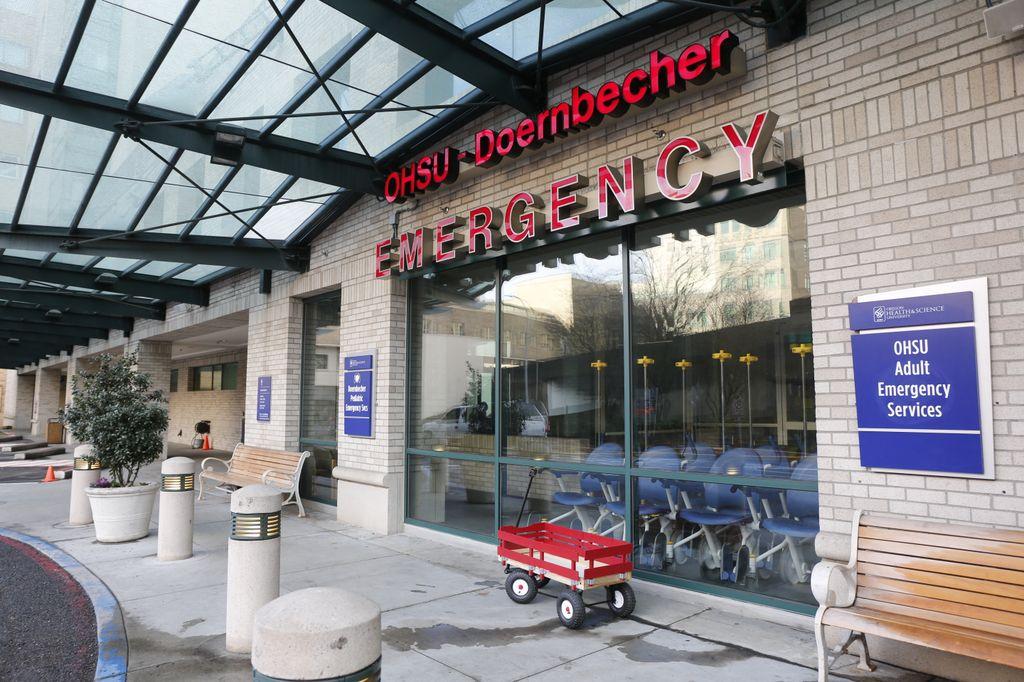
Patient volumes and accompanying revenues are “beginning to recover” at Oregon Health & Science University, but the institution expects the next 12 to 24 months to be financially lean as a recession grips the region, administrators said in a report to the board.
Still, just a month after it imposed big pay cuts on 4,500 executives, faculty and other non-unionized workers, OHSU is already looking at how to reverse those cuts, perhaps in the fiscal year starting in July 2021.
The report to the board for its Friday meeting notes that OHSU’s cash and investments are actually up from before the start of the coronavirus pandemic because of big emergency payments from the federal government.
OHSU expects to rack up combined operating losses of $198 million for the fiscal year ending June 30, and the following fiscal year, and then eke out a $23 million operating profit, with a three-year operating loss of $175 million, according to a report for the board meeting scheduled for Friday.
The final numbers for last month will likely represent the bottom of the revenue trough, with May showing the start of a rebound, the report said.
But the operating numbers over the next year or two could be much worse or better, depending on how the coronavirus pandemic and accompanying world economic slump evolve, according to the report.
In the grimmest scenario administrators presented, OHSU could sustain operating losses totaling $454 million for the three-year period. In the rosiest scenario, OHSU could have an operating profit of $97 million for the period.
If profits bounce back in that fashion, OHSU could seek to restore much of the pay cuts it imposed last month on 4,500 executives, faculty and other highly paid workers, administrators said.
“The upside (budget) scenario would allow most of the $179 million in absolute salary reductions incurred by 4,500 faculty and administrators over two years to be “bought back” from positive operating income in FY22, while the downside scenario would defer that option to FY23 or later,” the report said. Fiscal year 2022 runs from July 2021 throughJune 2022.
The report also noted OHSU’s growing stash of cash and investments.
Just before the COVID crisis hit, OHSU’s cash and investments stood at $1.26 billion. That’s now up to $1.45 billion, according to the report.
“In April, OHSU received $189 million in federal cash support from the initial CARES Act grants to health care providers, as well as short-term interest free loans in the form of Medicare payment advances and deferral of FICA taxes,” the report said. FICA taxes are paid by employers into the Social Security and Medicare systems.
OHSU’s stock market portfolio losses due to the virus-induced market dive of March were largely reversed in April, the report noted. The stock market rise has continued into May.
In addition to its own cash and investments, OHSU has access to its foundation’s money, which totals roughly $1 billion.
OSHU executives noted that income tax revenues to the state of Oregon are likely to sink as a result of the mass layoffs caused by the pandemic. State agencies – including OHSU, which is a public corporation – are being asked to explain how they would absorb state funding cuts.
OHSU said an 8.5% cut in the $79 million the state has budgeted for OHSU for the July 2019 to June 2021 biennium would amount to a $6.7 million reduction. The state aid goes mainly to subsidizing OHSU’s schools of medicine, nursing and dentistry. Cuts would prompt OHSU to impose tuition increases and reduce class sizes, administrators said.
Based on past economic downturns, OHSU expects its providers to see fewer patients during the pandemic-created recessions “people defer physician visits and medical care.”
The note also said there will be fewer patients on commercial health insurance plans and correspondingly more patients on government health insurance, especially Medicaid, which covers low-income people. That shift will be caused by higher unemployment. Commercial plans pay about double the rate that Medicaid and Medicare pay, according to OHSU. The hospital’s payor mix could shift from a pre-COVID ratio of 41% commercial and 59% government to 34% commercial and 66% government-backed insurance with rising unemployment in the coming 12 months, OHSU said.
The institution should also brace for a drop in state funding, the note said.
A state forecast this week predicted a $2.7 billion budget shortfall for the current biennium alone, which ends June 30, 2021. That gap will force some hard decisions, lawmakers said.
You can reach Christian Wihtol at [email protected].